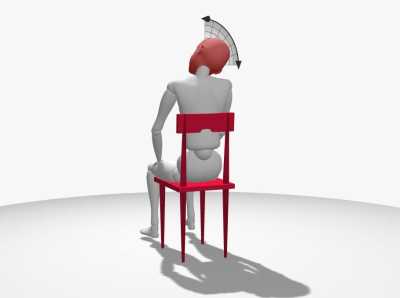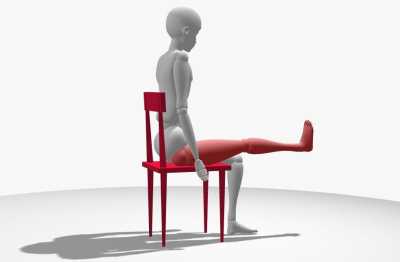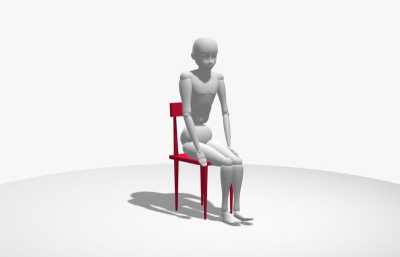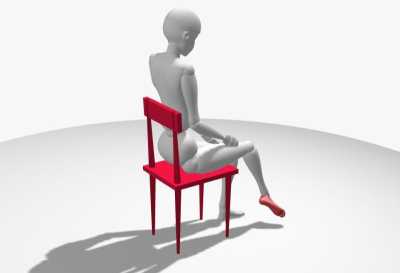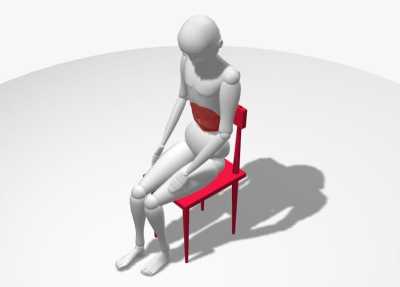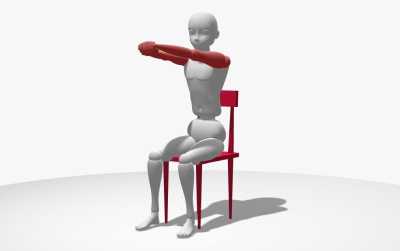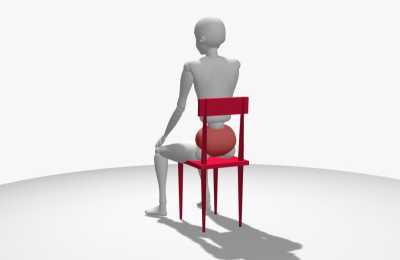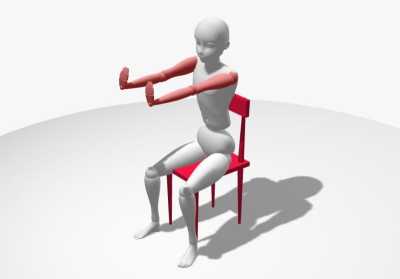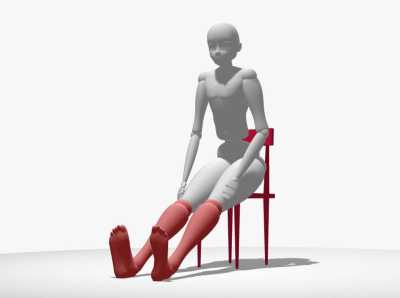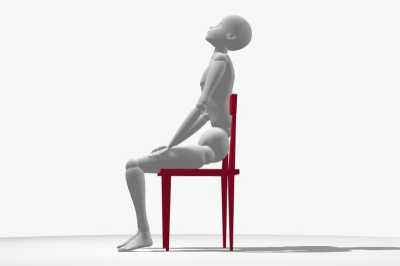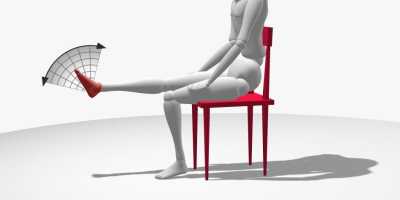
10 exercises to do while working at your computer
Are you tired of feeling sluggish and drained after long hours of sitting in front of your computer? Here you have a collection of exercises that you can easily incorporate into your daily routine, right at your workstation. These exercises are specially tailored to keep you active, improve your posture, and boost your energy levels without interrupting your workflow.
Whether you're answering emails, attending virtual meetings, or diving into complex tasks, these exercises are designed to be performed while sitting or standing at your desk. They target various muscle groups, promote flexibility, and help you maintain a healthy mindset throughout the day.
Remember, taking short breaks to engage in physical activity not only benefits your body but also enhances your productivity and mental well-being. So, let's dive into these invigorating exercises that will have you feeling refreshed, recharged, and ready to conquer your workday!
Get ready to experience the perfect balance of work and wellness. Let's begin the journey towards a healthier, happier, and more active work life!
-
Neck Stretches
Gently rotate your neck to one side, bringing your ear towards your shoulder. Hold for a few seconds and then switch sides. Repeat several times.

-
Start slowly
Begin the neck rotation exercise by gently moving your neck from one side to the other. Avoid any sudden or jerky movements to prevent strain.
-
Maintain proper posture
Sit up straight and align your head with your spine while performing the exercise. This will ensure proper form and maximize the benefits of the stretch.
-
Engage your core
Activate your core muscles to stabilize your upper body during the exercise. This will help maintain balance and prevent excessive movement.
-
Relax your shoulders
Keep your shoulders relaxed and avoid tensing them during the rotation. Let the movement focus on your neck and upper spine.
-
Find a comfortable range of motion
Rotate your neck only as far as it feels comfortable. Avoid pushing or forcing the movement beyond your natural range of motion to prevent any discomfort or pain.
-
Hold each position
When you rotate your neck to one side, hold the position for a few seconds before switching to the other side. Repeat the exercise several times.
-
-
Leg Raises
Keep your feet on the floor and lift one leg straight up, keeping it extended. Hold for a few seconds and then lower it down. Repeat with the other leg.
Gently rotate your neck to one side, bringing your ear towards your shoulder. Hold for a few seconds and then switch sides. Repeat several times.

-
Maintain proper posture
Keep your feet flat on the floor and sit up straight while performing the leg lift exercise. This will help maintain stability and engage your core muscles.
-
Engage your abdominal muscles
Activate your abdominal muscles by drawing your belly button towards your spine. This will provide stability and support throughout the exercise.
-
Lift one leg at a time
Begin by lifting one leg straight up, keeping it extended. Hold the lifted position for a few seconds to engage the leg muscles.
-
Control the movement
Slowly lower the lifted leg back down with control, avoiding any sudden or jerky movements. Maintain a steady pace throughout the exercise.
-
Repeat with the other leg
After completing the repetitions with one leg, switch to the other leg and perform the same movement. Alternate between legs for a balanced workout.
-
-
Leg Extensions
Tighten the muscles of your thighs and push your heels down, keeping your feet on the floor. Hold for a few seconds and then relax. Repeat several times.

-
Sit with proper posture
Ensure you are sitting upright with your back straight and feet flat on the floor before starting the exercise. This will help maintain stability and engage the target muscles effectively.
-
Engage your thigh muscles
Tighten the muscles of your thighs by consciously contracting them. Imagine squeezing your thighs together as if you were trying to hold a small object between your knees.
-
Push your heels down
While keeping your feet firmly planted on the floor, push your heels down as if you are trying to press them through the ground. This action further engages the thigh muscles.
-
Hold and release
Hold the tightened thigh muscles and pushed heels position for a few seconds to fully engage the muscles. Then, relax and release the tension. Repeat this sequence several times.
-
Focus on controlled movements
Perform the tightening and relaxing of thigh muscles with slow and controlled movements. Avoid any sudden or jerky motions to ensure proper muscle engagement and minimize the risk of injury.
-
-
Ankle Rotations
Rotate your ankles in circles, first in one direction and then in the other. Do this with both legs.

-
Sit with proper posture
Ensure you are sitting upright with your back straight and feet flat on the floor before starting the exercise. This will help maintain stability and proper alignment.
-
Lift one leg at a time
Lift one leg slightly off the floor, keeping the other foot firmly planted. This will allow you to focus on rotating the ankle of the lifted leg without any interference.
-
Rotate the ankle in circles
Start by rotating your ankle in circles in one direction. Make sure to move the foot smoothly and gradually. Perform several rotations in this direction.
-
Switch direction
After completing rotations in one direction, switch and rotate your ankle in circles in the opposite direction. Maintain a controlled and fluid motion.
-
Repeat with the other leg
Once you have completed the rotations with one leg, lower it down and repeat the same steps with the other leg. Ensure equal attention and care for both sides.
-
Perform multiple sets
For optimal results, perform multiple sets of ankle rotations with both legs. Start with a comfortable number of repetitions and gradually increase as your ankle mobility improves.
-
Maintain a relaxed and controlled movement
While rotating your ankles, avoid any sudden or jerky movements. Keep the motion smooth, controlled, and within a comfortable range of motion to prevent strain or discomfort.
-
-
Abdominal Contractions
Tighten your abdominal muscles inward, as if you're trying to bring your belly button towards your spine. Hold for a few seconds and then relax. Repeat several times.

-
Sit with proper posture
Ensure you are sitting upright with your back straight and feet flat on the floor before starting the exercise. This will help maintain stability and engage your core muscles effectively.
-
Take a deep breath
Inhale deeply to prepare for the exercise. This will help you focus and engage your abdominal muscles.
-
Tighten your abdominal muscles
As you exhale, contract your abdominal muscles inward, as if you're trying to bring your belly button towards your spine. Focus on engaging the deep core muscles.
-
Hold the contraction
Hold the contraction for a few seconds, ensuring you maintain a steady and controlled tension in your abdominal muscles.
-
Relax and repeat
After holding the contraction, release the tension and relax your abdominal muscles. Take a breath and repeat the exercise for several repetitions.
-
Gradually increase intensity
Start with a comfortable level of contraction and gradually increase the intensity as your core strength improves. Avoid straining or holding your breath during the exercise.
-
Incorporate into your routine
You can perform this exercise intermittently throughout your work or reading sessions. Aim to include it regularly in your routine for the best results.
-
Focus on mind-muscle connection
While performing the exercise, focus on establishing a strong mind-muscle connection with your abdominal muscles. Visualize the muscles working and engaging with each contraction.
-
Combine with deep breathing
To enhance the effectiveness of the exercise, combine it with deep breathing. Inhale deeply as you prepare, and exhale fully as you contract and hold your abdominal muscles.
-
Stay consistent
Consistency is key for seeing progress. Make it a habit to regularly perform this exercise to strengthen and tone your abdominal muscles over time.
-
-
Arm Stretches
Extend your arms in front of you and interlace your fingers. Rotate your palms outward and stretch your arms, feeling the stretch in your shoulders and upper back. Hold for a few seconds and then relax.

-
Sit with proper posture
Ensure you are sitting upright with your back straight and feet flat on the floor before starting the exercise. This will help maintain stability and maximize the effectiveness of the stretch.
-
Extend your arms in front of you
Bring your arms straight out in front of you, parallel to the ground. Interlace your fingers and rotate your palms outward, away from your body.
-
Feel the stretch in your shoulders and upper back
Gently push your interlaced hands forward while rounding your upper back slightly. You should feel a stretch across your shoulders and upper back.
-
Hold the stretch
Hold the stretched position for a few seconds, ensuring you feel a comfortable and gentle stretch. Avoid any pain or discomfort.
-
Relax and repeat
Release the stretch and relax your arms and shoulders. Take a moment to rest, and then repeat the stretch for several repetitions.
-
Gradually increase the stretch
If the initial stretch feels too mild, you can gradually increase the intensity by pushing your hands slightly further forward while maintaining a comfortable position.
-
Breathe deeply and relax
During the stretch, remember to breathe deeply and relax your body. Deep breathing can help enhance the relaxation and effectiveness of the exercise
-
-
Glute Contractions
Squeeze your glute muscles together and hold for a few seconds. Relax and repeat the contraction several times.

-
Sit with proper posture
Ensure you are sitting upright with your back straight and feet flat on the floor before starting the exercise. This will help maintain stability and engage the correct muscles.
-
Squeeze your glute muscles
Tighten and contract your glute muscles by squeezing them together. Imagine you are trying to hold a coin between your buttocks.
-
Hold the contraction
Maintain the squeeze for a few seconds, focusing on engaging the glute muscles and feeling the tension in the buttocks.
-
Relax and repeat
Release the contraction and relax your glute muscles. Take a moment to rest, and then repeat the squeeze for several repetitions.
-
Gradually increase the intensity
If the initial squeeze feels too mild, you can gradually increase the intensity by squeezing harder and holding the contraction for a longer duration.
-
Breathe and stay relaxed
Remember to breathe normally and keep the rest of your body relaxed during the exercise. Avoid tensing other muscles or holding your breath.
-
Combine with other exercises
The glute squeeze exercise can be combined with other seated exercises, such as leg lifts or abdominal contractions, to create a comprehensive seated workout routine.
-
Enjoy the benefits
Regularly practicing the glute squeeze exercise can help strengthen and tone your glute muscles, which can contribute to better posture and overall lower body strength.
-
-
Wrist Stretches
Extend your arms in front of you and flex your wrists up and down, feeling the stretch in your forearms and wrists. Repeat several times.

-
Sit with proper posture
Ensure you are sitting upright with your back straight and feet flat on the floor before starting the exercise. This will help maintain stability and engage the correct muscles.
-
Extend your arms in front of you
Stretch your arms forward and parallel to the ground, keeping them straight.
-
Flex your wrists upward
Bend your wrists upward, bringing your palms closer to your body. Feel the stretch in your forearms and wrists.
-
Hold the stretch
Maintain the flexed position for a few seconds, focusing on the stretch in your forearms and wrists.
-
Flex your wrists downward
Lower your wrists, bending them downward. This will create a stretch in the opposite direction.
-
Repeat the flexion movement
Continue flexing your wrists up and down, alternating between upward and downward movements. Repeat the exercise for several repetitions.
-
Breathe and stay relaxed
Remember to breathe normally and keep the rest of your body relaxed during the exercise. Avoid tensing other muscles or holding your breath.
-
Gradually increase the range of motion
If you feel comfortable with the flexion movement, you can gradually increase the range of motion by bending your wrists further up and down.
-
-
Calf Muscle Contractions
Tighten your calf muscles and hold for a few seconds. Relax and repeat the movement several times.

-
Sit with proper posture
Ensure you are sitting upright with your back straight and feet flat on the floor before starting the exercise. This will help maintain stability and engage the correct muscles.
-
Extend your legs in front of you
Sit with your legs extended straight in front of you, keeping your heels on the floor.
-
Tighten your calf muscles
Consciously contract your calf muscles by flexing your feet, bringing your toes towards your body. Feel the tension in your calf muscles.
-
Hold the contraction
Maintain the tightened position for a few seconds, focusing on the engagement of your calf muscles.
-
Relax your calf muscles
Release the contraction and allow your calf muscles to relax. Feel the tension dissipate.
-
Repeat the movement
Continue tightening your calf muscles and holding the contraction for a few seconds before relaxing. Repeat the movement for several repetitions.
-
Breathe and stay relaxed
Remember to breathe normally and keep the rest of your body relaxed during the exercise. Avoid tensing other muscles or holding your breath.
-
Gradually increase the duration
If you feel comfortable with the movement, you can gradually increase the duration of the calf muscle contraction. Aim to hold the contraction for slightly longer each time
-
-
Deep Breathing
Take a few moments to inhale deeply through your nose and exhale slowly through your mouth. This will help you relax and oxygenate your body.

-
Find a comfortable position
Sit upright in your chair and find a comfortable position. You can even imagine you're on a tropical beach with a cool breeze!
-
Inhale deeply through your nose
Take a deep breath in through your nose, as if you're smelling freshly baked cookies or your favorite scent.
-
Exhale slowly through your mouth
Exhale slowly through your mouth, as if you're blowing out birthday candles or gently whispering a secret to your coworker.
-
Feel the relaxation
As you breathe out, imagine all the stress and tension leaving your body. Let it flow away like water down a peaceful river.
-
Oxygenate your body and mind
With each breath, imagine fresh oxygen filling your lungs and revitalizing your body and mind. Ah, refreshing!
-
Release the anger like a deflating balloon
As you exhale, imagine releasing any anger or frustration, just like letting the air out of an inflatable balloon. Phew, let it go!
-
Enjoy the mini relaxation break
Take pleasure in this mini relaxation break during your busy workday. It's like a mental vacation without leaving your desk.
-
Please note that these exercises are useful for staying active during prolonged periods of sitting, but they do not replace the need for regular physical activity outside of the work environment. It's essential to listen to your body throughout these exercises and prioritize your comfort and safety. If you experience any discomfort or pain, it is recommended to adjust the intensity of the exercise or consult with a healthcare professional for guidance.
To make these exercises a consistent part of your routine, consider setting reminders or incorporating them into your daily schedule. You can perform them intermittently throughout your work or reading sessions or designate specific times during the day for stretching and movement breaks. By making them a habit, you can reap the benefits of increased flexibility, reduced muscle tension, and improved overall well-being. Remember, small and consistent steps towards an active lifestyle can make a significant difference in your long-term health.
